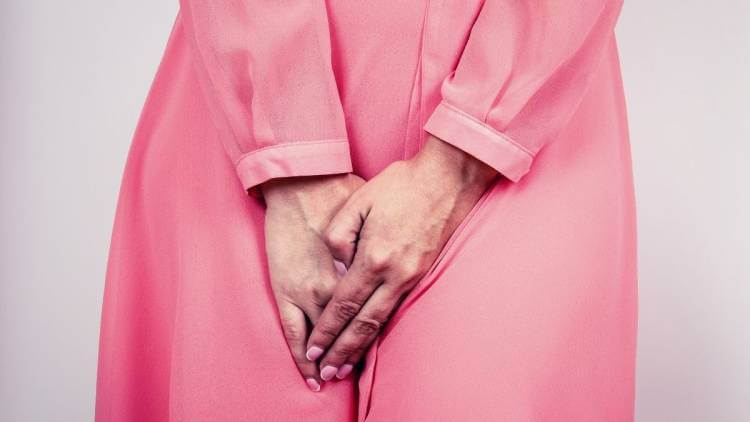Urinary incontinence is a surprisingly common problem in the U.S., affecting up to one-third of American adults and slightly more women than men. While many people assume urinary incontinence is just a natural part of aging, this is not the case. It also doesn’t only affect older people, but can affect young and middle-aged adults, especially women.
Luckily, urinary incontinence can be managed, and you can regain control of your bladder – and your life.
What is Urinary Incontinence?
Urinary incontinence describes a loss of control of the bladder, usually resulting in involuntary urine leakages. The main types of urinary incontinence are:
- Stress incontinence – Leakages occur when something puts pressure on the bladder, such as coughing, sneezing, sitting or standing suddenly, or exercising. Stress incontinence can also result from high fetal weight during pregnancy.
- Urge incontinence – Leakages can occur when urges to urinate are so sudden and strong that the patient cannot “hold it.” Some potential risk factors for urge incontinence are weakened muscles or damaged nerves around the bladder resulting from surgeries, vaginal childbirth, or medical conditions affecting nerves and muscles.
- Mixed incontinence – In mixed incontinence, a patient experiences symptoms of both stress incontinence and urge incontinence.
- Functional incontinence – Leakages occur because the patient is functionally unable to reach the toilet in time to urinate, such as physical impairment that makes it difficult to move quickly or unfasten pants.
To some degree, treatment options for urinary incontinence depend on the type of incontinence a patient experiences. Because of this and the fact that urinary incontinence can indicate an underlying medical condition, such as urinary tract infections, prostate problems, neurological diseases like Parkinson’s, and more, a doctor or urologist will take the patient through a careful diagnostic process to determine the cause and nature of symptoms and create an appropriate treatment plan.
Controlling Urinary Incontinence
Strategies for managing urinary incontinence range from lifestyle-oriented to pharmaceutical to surgical. Doctors typically begin by recommending the most conservative treatment options – i.e., behavioral therapies – before prescribing medication. In the event that neither behavioral therapies nor medication are enough to resolve the patient’s symptoms, doctors may recommend advanced therapies, which may involve injections or minor surgeries. Keep reading to learn more about each option below.
Behavioral Therapies for Urinary Incontinence
Many people rely on stop-gap measures such as absorbent pads and incontinence underwear to mitigate the effects of urinary leakages so they can go on about their daily lives. However, there are management strategies that more directly target the root symptoms of urinary incontinence. Many patients find success with these therapies without having to turn to medication or surgeries. Learn about the strategies below.
Bladder Diary
A bladder diary is an important diagnostic and treatment tool for people with bladder dysfunction, such as overactive bladder (OAB) and/or urinary incontinence.
Patients use bladder diaries to record what they drink (and sometimes what they eat), how much by volume, and when, as well as when they urinate and how much by volume. This helps determine the patient’s baseline and any potential food or fluids that trigger urges or leakages. The types of information recorded may vary depending on the type of urinary incontinence the patient experiences.
Diet and Fluid Intake
One of the most common methods for controlling urinary incontinence is monitoring one’s fluid intake and/or reducing consumption of foods that trigger symptoms.
Patients with urinary incontinence are often advised to reduce or eliminate caffeinated beverages such as coffee, tea, and soda, and any other fluids that increase urination, such as alcohol. They are also often advised to reduce fluid consumption before bed.
Besides fluids, there are also foods that can exacerbate symptoms by irritating the lining of the bladder, such as spicy foods or highly acidic foods. As described in the previous section, a bladder diary can help determine the foods and drinks that do and do not work for a given patient.
Bladder Training
Bladder training is the process of retraining the bladder to hold urine for longer and longer amounts of time. This usually entails scheduling restroom trips at the same interval every day and then gradually increasing the intervals between restroom trips.
It may also involve pelvic floor exercises, also known as Kegel exercises, to help strengthen the muscles around the bladder and urethra. This is an especially effective treatment strategy for women with bladder dysfunction, particularly in combination with other treatment methods.
Medications
If behavioral therapies alone do not sufficiently resolve a patient’s urinary incontinence symptoms, medications can be prescribed. These include:
- Anticholinergic drugs
- Mirabegron
- Certain tricyclic antidepressants
- Certain antidepressants of the serotonin and norepinephrine reuptake inhibitor family (SNRIs)
- Estrogen (low estrogen can cause deterioration of the lining of the bladder and reduce bladder control)
As with all pharmaceutical treatments, urinary incontinence medications may have side effects or negatively interact with other medications a patient is taking. Some trial and error may be required to determine the best medication for a given patient.
Advanced Therapies
Finally, advanced therapies are available for patients whose urinary incontinence persists even with medication. The most common are Botox, Percutaneous Tibial Nerve Stimulation (PTNS), and Sacral Nerve Stimulation, also known as Sacral Neuromodulation. While Botox is administered via injection to the bladder muscle, nerve stimulation treatments are typically administered via needles or small implants that deliver low voltage electrical stimulation to the nerves that help control bladder function.
There is Hope
Urinary incontinence doesn’t have to be a normal part of your life. Talk to your doctor or urologist today to start managing your urinary incontinence symptoms and stop leakages before they happen.


